It probably comes as no surprise that Japan is currently seeing a huge surge of tourists due to the attractiveness of the weak yen. Having greeted around 17.7 million international visitors in the first half of 2024, the country has managed to surpass its pre-pandemic tourist numbers and these numbers don’t seem to be dropping anytime soon.
So, what comes with huge swathes of tourists? Crowds. Many, many crowds, and while it can be fun for a while to get into the thick of this and feed off of the energy of your fellow human, being surrounded by people all the time can get exhausting really quickly (just ask the locals). Therefore, if you’re in Japan on holiday, or are planning a trip there but need a break from or want to avoid mingling with the masses, why not check out some less…people-y places instead? Specifically, why not check out 5 spots that are guaranteed to send animal lovers and introverts into a tizzy?
1.Ainoshima
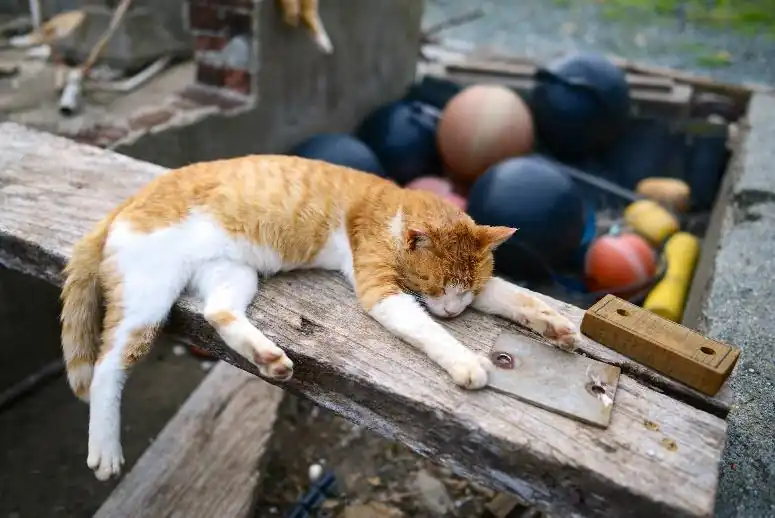
There are 15 “cat islands” in Japan that have currently been recorded and Ainoshima is one of them. Known as “Cat Heaven Island”, this little piece of land bobbing on Japanese waters is located in Shingu, Fukuoka, and is home to around 300 humans and 100 free-roaming cats.
The island of Ainoshima is small with a 5.4 km road that loops around it, making it perfect to explore the area by bicycle. To get to the island, one can take a 17-minute boat ride from the ferry terminal, which is 12 minutes by bus from Nishitetsu Shingu Station on the Nishitetsu Kaizuka Line.
At the time of writing, the cost of a one-way ferry ticket is 480 yen.
The cats on the island are feral but friendly and have the right to roam where they please. Ainoshima has been a place of sanctuary for these furry creatures for over 3 decades.
Visitors to the island are cautioned not to feed the cats and to use their sound judgment to gauge whether or not a cat may be receptive to being petted.
2.Okunoshima
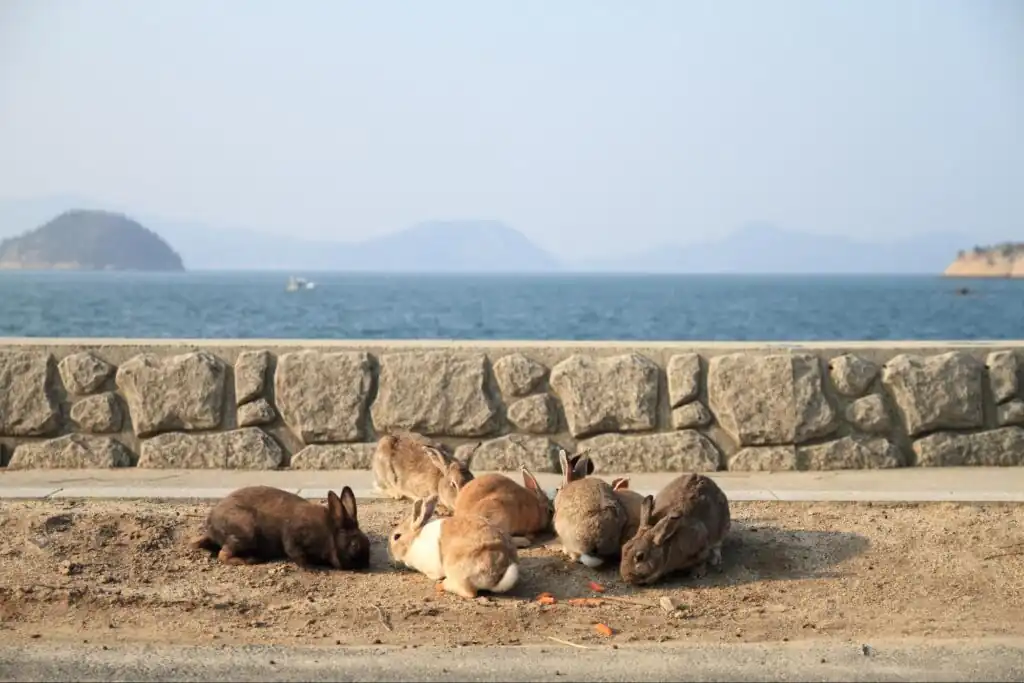
A small island located in the Inland Sea of Japan, in the eastern part of Hiroshima prefecture, Okunoshima is the only one of the country’s 14,125 islands to play host to a large colony of wild rabbits.
Theories on how the rabbits came to inhabit the island vary but a favorable one weaves a tale that begins in 1963 when the island opened up to tourists. The island’s first-ever hotel manager, Hirofumi Nishiyoshi, declared rabbits the mascot of Okunoshima to promote tourism to the island; and part of his mascot campaign was to invite a group of schoolchildren to the island to release 8 rabbits into the wild.
Having no natural predators on the island, the population of the rabbits skyrocketed and it is said that there are now over 1,000 rabbits bounding around on Okunoshima.
Hirofumi Nishiyoshi chose rabbits to be the island’s mascot because the animal is a symbol of intelligence, progress, and good fortune in Japan. They are also frequent characters in many Japanese fairy tales.
There are two options to get to Okunoshima – a ferry from Tadanoumi or Omishima – and a visit to the island makes for a great day trip. If you want to spend the night, there is a vacation village with a hotel, restaurant, and natural hot springs. Humans aren’t allowed to permanently reside on the island unfortunately, but if you are looking for a place to stay long-term, why not check out Village House, a real estate organization with over 1,000 properties across Japan’s 47 prefectures?
3.Miyajima
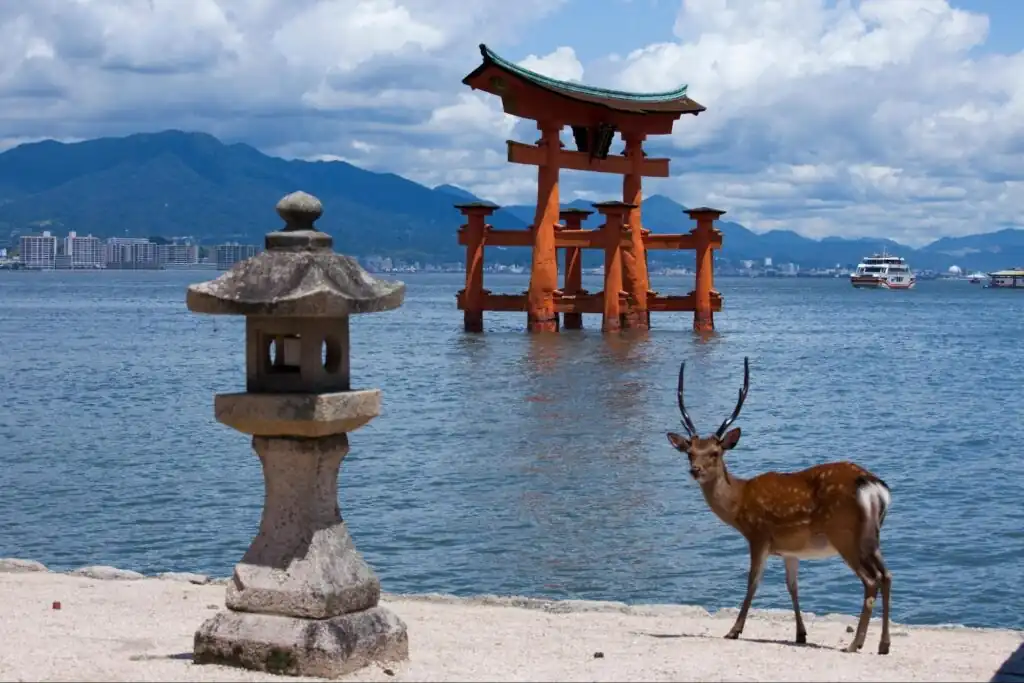
Officially named Itsukushima but lovingly called Miyajima by locals, this island is around 30 minutes away from Hiroshima City. Miyajima, which translates to “Shrine Island” in English, is famous for its shrines and large torii gate that seems to float on the water when the tide is in. It’s also famous for its herds of deer that roam freely around the island. While used to humans, visitors are discouraged from feeding them.
Other attractions on the island include numerous temples and shrines, a ropeway, a shopping street, forest trails, and a history and folklore museum. Depending on the time of year, there may be seasonal events and festivals.
To get to Miyajima, take a ferry from Miyajimaguchi Station. It takes approximately 10 minutes to get to the island and costs around 200 yen at the time of writing.
4.Nasu Animal Kingdom
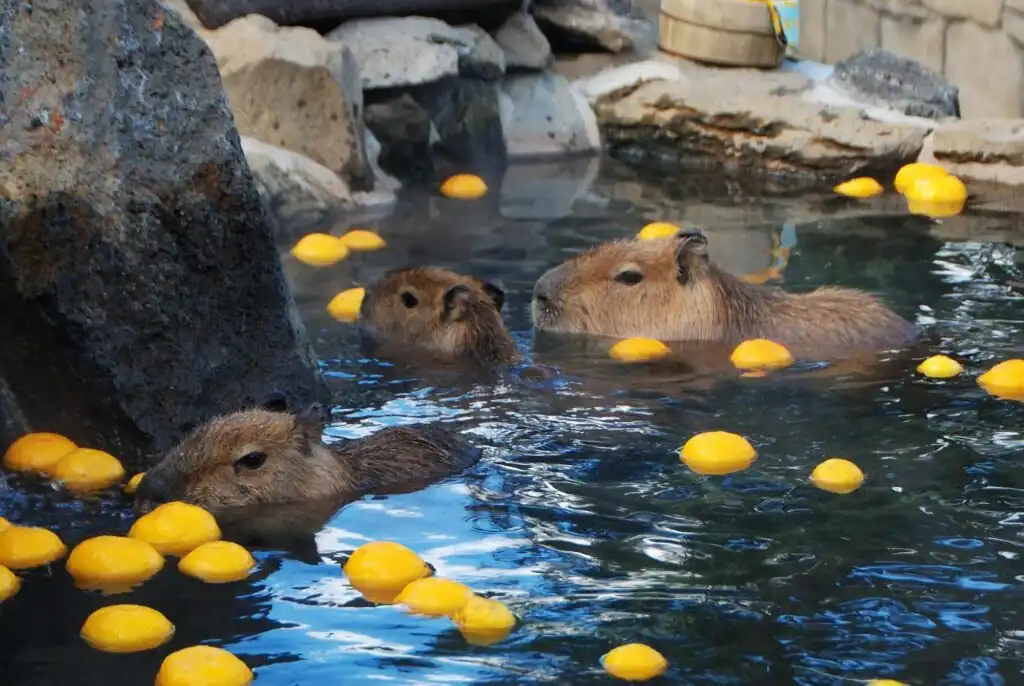
Nasu Animal Kingdom is an animal park located in the northeastern part of Tochigi Prefecture. The 43-hectare attraction is home to around 600 animals and is divided into a main indoor area (“Town”) and an outdoor area (“Farm”).
A free shuttle service runs from Nasushiobara Station and upon arrival, visitors can meet with, pet, and feed red pandas, horses, sheep, capybaras, alpacas, rabbits, and kangaroos to name a few.
There are also dog-friendly areas, and a generous dog park should visitors want to come for a visit with their furry best friend. Those who find themselves sadly without a furry companion can either play with one (or two, or three!) in the open-air dog zone and even rent a dog by the hour.
The animal park also has on their schedule various animal shows and feeding segments, making this place a perfect day trip for families.
5.Jigokudani Monkey Park
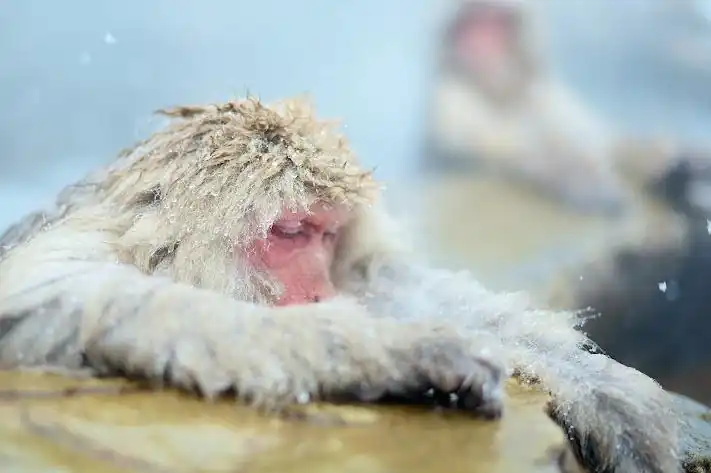
Located in Yamanouchi which in turn is found in Nagano Prefecture, Jigokudani Monkey Park or Snow Money Park is the only place in the world where you can see Japanese Macaques naturally bathing and soaking in the area’s hot springs.
The park is open all year round, but it is said that the best time to visit is between December to March to increase the chances of seeing Japanese Macaques using the hot springs. Taking photos of them lounging in the steaming water amidst a snowy backdrop is the picture- perfect snapshot many visitors aim for.
The best way to get to Jigokudani Monkey Park is to take a bus from Yudanaka Station, which will drop you off at the entrance to the forest (and where the ticket office is). From there it’s about a 30-minute or 1.6km walk to the hot spring area itself and there is an admission fee of 800 yen for adults and 400 yen for children (at the time of writing).
An alternative route to Jigokudani Monkey Park is via a paid parking lot where you only need to walk 10-15 minutes, but it is not served by public transport and the road leading to it may be closed during winter.
Related articles:
- Hokkaido Wildlife Guide: 5 Cute Animals to Discover in the Island’s Wilderness
- Cute Animals to See During Spring
- Owning Pets in Japan

Freelance writer with over 2 years of experience writing for the Village House Blog, ESL teacher, and digital nomad who has lived in countries including The Czech Republic, The UK, The U.A.E., Japan, and most recently, Georgia. Is constantly on the hunt for the best, most optimal apartment for remote work when not enjoying going to film festivals, concerts, and the theater.



